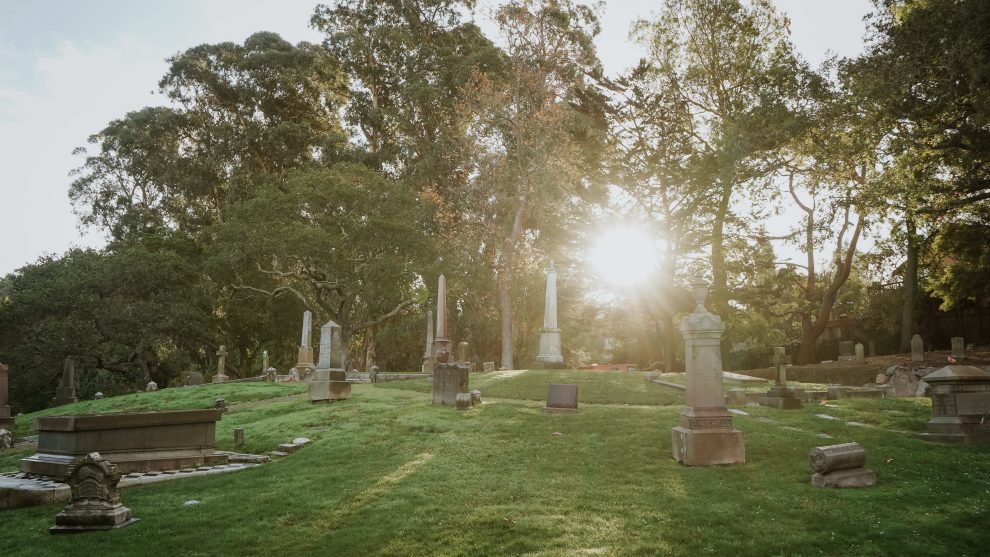One morning a several years back I had occasion to call a neighboring parish, the name of which is All Souls. Not having the number handy, I dialed information (this was when you did such a thing, and when real people still answered) and had this exchange with the operator:
“I need the number for All Souls in Englewood, please.”
“What’s the name again?”
“All Souls”
“All what?”
“All. A-L-L.” I spelled slowly and deliberately. “Souls. S-O-U-L-S. All Souls.”
Silence from the operator, and then: “That’s a strange name. Does it mean something?”
When you work in the church, it’s easy to forget that not everyone speaks Catholic. If they did, they would know that All Souls occupies a special place in our hearts, on our calendars (November 2), and in our faith tradition. It is an occasion for doing one of the things scripture and tradition require of us—remembering. To call to mind those faithful who have gone before us, to thank God for the gift of their time on Earth and, yes, to pray for their souls.
A friend of mine who converted to Catholicism in adulthood insists that her Methodist grandmother would have been offended by the idea of anyone praying for her after she passed on. This old woman believed strongly that her life would speak for itself, thank you very much, and she would take her chances with God on Judgment Day.
Catholicism is a religion that looks suffering and death square in the face without flinching. On our crucifix we show the broken body of Christ poured out for us; and even as we celebrate resurrection our language abounds with images of sorrow.
Still, we are a Good News people and our message, even in the face of death, is one of hope. In the church’s infancy, the pagans’ funeral ritual was called vale, a final farewell, but that of the Christians was vivas, a prayer that the departed might live in God and intercede for the living.
In my family, regular outings to the cemetery, far from being maudlin affairs, were frequent and rather pleasant experiences. Sometimes on a Sunday afternoon, Daddy would abruptly rise from his chair, put down the newspaper, set his coffee cup in the sink, and announce he was going to see his mother.
Whichever kids were around would pile into the car for the ride into the city. St. Mary’s Cemetery sprawled across acres of raised land, which, if you had an imagination, could almost be called a hillside. Its main entrance faced a street lined with dingy apartment houses and tired storefronts.
But behind its black iron fence was an oasis of restful green lawns dotted with graceful shade trees that seemed to bend benevolently over the grave sites they protected. A vast sea of headstones floated across the acreage, each one whispering the name of someone beloved.
While our father knelt at his mother’s grave, rosary in hand, we children might join him in a quick Hail Mary then wander the endless rows reading the sentiments on the headstones and feeling strangely connected to these families we didn’t know. There, carved in stone, were depictions of angels, snippets of scripture verses we recognized, and eloquent promises to never forget.
At last, Daddy would stand up, and the sound of him blowing his nose signaled that the visit was over. As we ambled back to the car, he would remind us that in death, our loved ones are with God and more truly accessible to us than they were in life. “Now that Grandma is in heaven,” he’d say reassuringly, “we can pray to her whenever we want.”
Our trips to the cemetery speak to a desire as old as humanity, the part of us that knows we are strands in a web—vast and tangled and beautiful in its artistry—a web that catches us in the past even as it spins us into the future.
Perhaps because of this unspoken truth, the mood in our old Chevy was always light as we drove away from St. Mary’s. On the way home, we might stop at the park or drop into a candy store for an ice cream soda, all while listening to Daddy tell stories about his mother and recalling his boyhood escapades on these streets while we kids laughed and shot straw wrappers at one another. There might be more cheerful ways to spend an afternoon, but I’m not sure what they are.
Image: Unsplash/Madeleine Maguire














Add comment